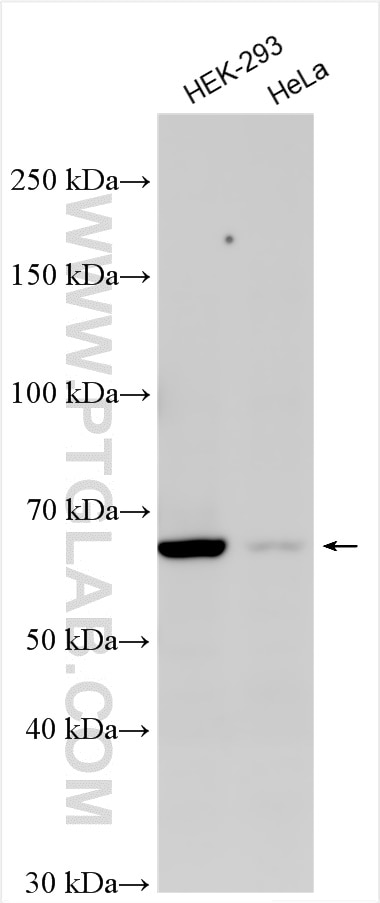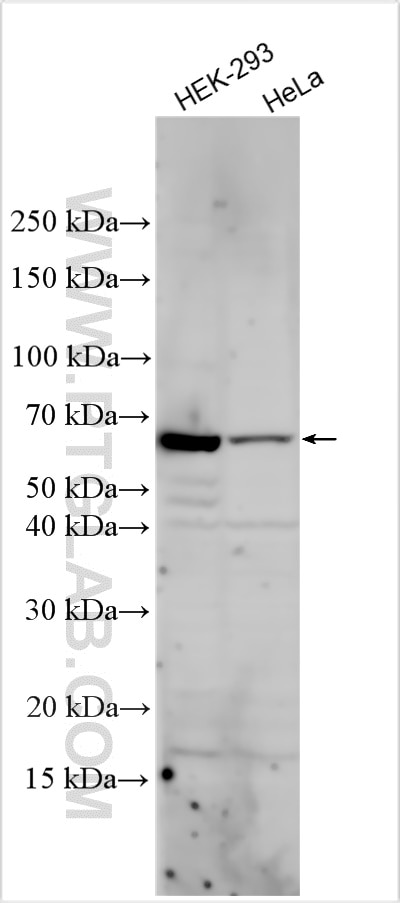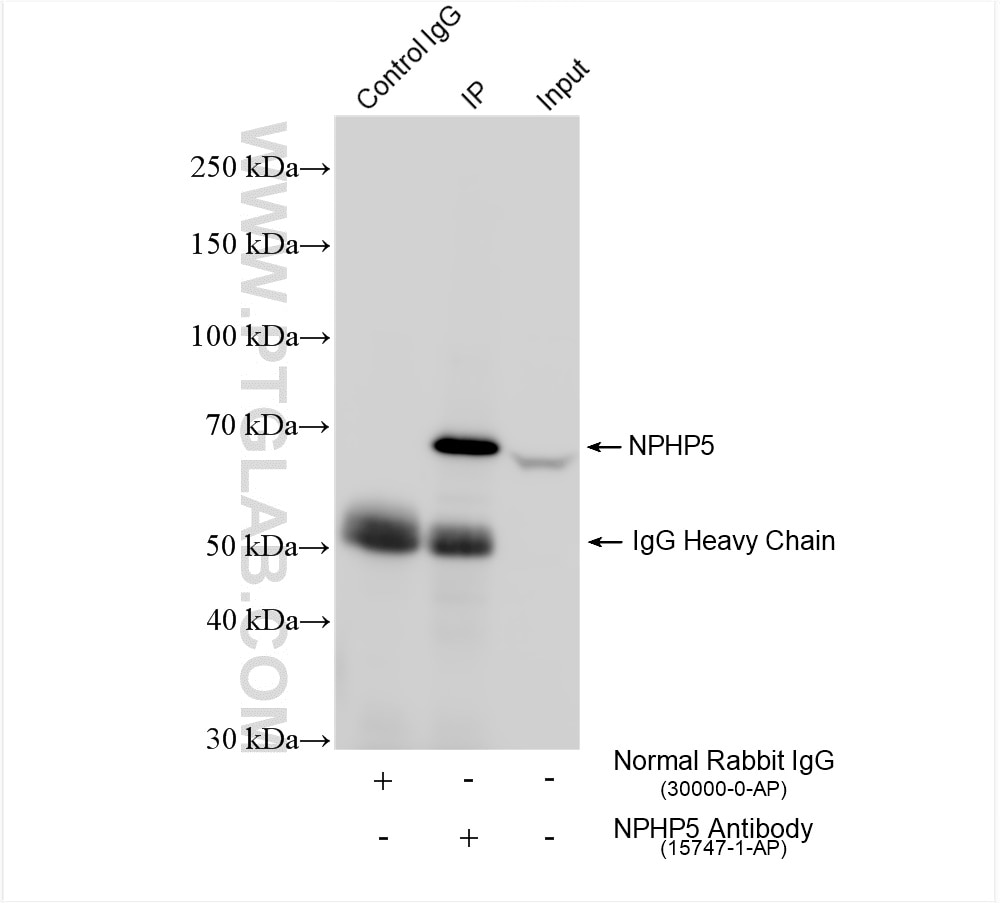Anticorps Polyclonal de lapin anti-NPHP5/IQCB1
NPHP5/IQCB1 Polyclonal Antibody for WB, IP, ELISA
Hôte / Isotype
Lapin / IgG
Réactivité testée
Humain
Applications
WB, IF, IP, ELISA
Conjugaison
Non conjugué
N° de cat : 15747-1-AP
Synonymes
Galerie de données de validation
Applications testées
| Résultats positifs en WB | cellules HEK-293, cellules HeLa |
| Résultats positifs en IP | cellules HEK-293, |
Dilution recommandée
| Application | Dilution |
|---|---|
| Western Blot (WB) | WB : 1:1000-1:5000 |
| Immunoprécipitation (IP) | IP : 0.5-4.0 ug for 1.0-3.0 mg of total protein lysate |
| It is recommended that this reagent should be titrated in each testing system to obtain optimal results. | |
| Sample-dependent, check data in validation data gallery | |
Applications publiées
| IF | See 1 publications below |
Informations sur le produit
15747-1-AP cible NPHP5/IQCB1 dans les applications de WB, IF, IP, ELISA et montre une réactivité avec des échantillons Humain
| Réactivité | Humain |
| Réactivité citée | Humain |
| Hôte / Isotype | Lapin / IgG |
| Clonalité | Polyclonal |
| Type | Anticorps |
| Immunogène | NPHP5/IQCB1 Protéine recombinante Ag8203 |
| Nom complet | IQ motif containing B1 |
| Masse moléculaire calculée | 598 aa, 69 kDa |
| Poids moléculaire observé | 69 kDa |
| Numéro d’acquisition GenBank | BC005806 |
| Symbole du gène | IQCB1 |
| Identification du gène (NCBI) | 9657 |
| Conjugaison | Non conjugué |
| Forme | Liquide |
| Méthode de purification | Purification par affinité contre l'antigène |
| Tampon de stockage | PBS with 0.02% sodium azide and 50% glycerol |
| Conditions de stockage | Stocker à -20°C. Stable pendant un an après l'expédition. L'aliquotage n'est pas nécessaire pour le stockage à -20oC Les 20ul contiennent 0,1% de BSA. |
Informations générales
IQCB1, also known as NPHP5, is a nephrocystin protein that interacts with calmodulin and the retinitis pigmentosa GTPase regulator protein. It has a central coiled-coil region and two calmodulin-binding IQ domains. Localized to the primary cilia of renal epithelial cells and connecting cilia of photoreceptor cells, IQCB1 is thought to play a role in ciliary function. Mutations in this gene result in Senior-Loken syndrome type 5, a juvenile disorder characterized by defects in the waste filtering system of the kidney, as well as retinal degradation.
Protocole
| Product Specific Protocols | |
|---|---|
| WB protocol for NPHP5/IQCB1 antibody 15747-1-AP | Download protocol |
| IP protocol for NPHP5/IQCB1 antibody 15747-1-AP | Download protocol |
| Standard Protocols | |
|---|---|
| Click here to view our Standard Protocols |
Publications
| Species | Application | Title |
|---|---|---|
Hum Mol Genet Pathogenic NPHP5 mutations impair protein interaction with Cep290, a prerequisite for ciliogenesis. | ||
Mol Biol Cell Rpgrip1l controls ciliary gating by ensuring the proper amount of Cep290 at the vertebrate transition zone. |




